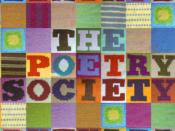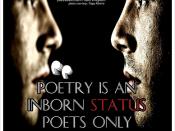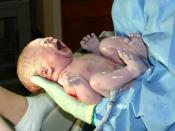ÃÂA Mother to her Waking InfantÃÂ was first published in 1790; the poem is narrated by a mother who is focusing her thoughts and words towards her newborn baby. The poem is directed solely at the child of the title, with the motherÃÂs words starting as the child awakes, ÃÂNow in thy dazzling half-oped eyeÃÂ. Joanna Baillie uses a number of techniques to mirror and represent a new motherÃÂs emotions and affections for her child. The meter and form of the poem help to emphasise these emotions and the various other uses of language contribute to the effect of the piece on a reader.
The poem is formed of eight stanzas, each one is six lines long except for the fifth stanza which is an octet. The stanzas are formed of sets of three rhyming couplets in the form AABBCC DDEEFF, the metre is Iambic Tetrameter but each stanza includes a trailing last line which is in Iambic Trimeter.
This form of rhyme and pattern of language adds to the effect of the poem in several ways. Normally a poem written in tetrameter, or lines of eight syllables, is lent a briskness or upbeat tempo, poems written in the more formal pentameter seem to carry a more deliberate and precise tone. However the language and the missing foot from the metre of the last line of each stanza helps to give the poem a more measured pace.
ÃÂPoor helpless thing! What do I see,That I should sing of thee?ÃÂThe shortened line enforces a natural pause in our reading of the poem and this is what keeps the pace even and more fitting to the relaxed and peaceful subject matter. Within some of the stanzas you can feel the pace quickening, especially with the use of a string of monosyllabic words...



Good Work
Your ideas are rather insightful, and you cited everything properly. Overall, you did a wonderful job!
0 out of 0 people found this comment useful.